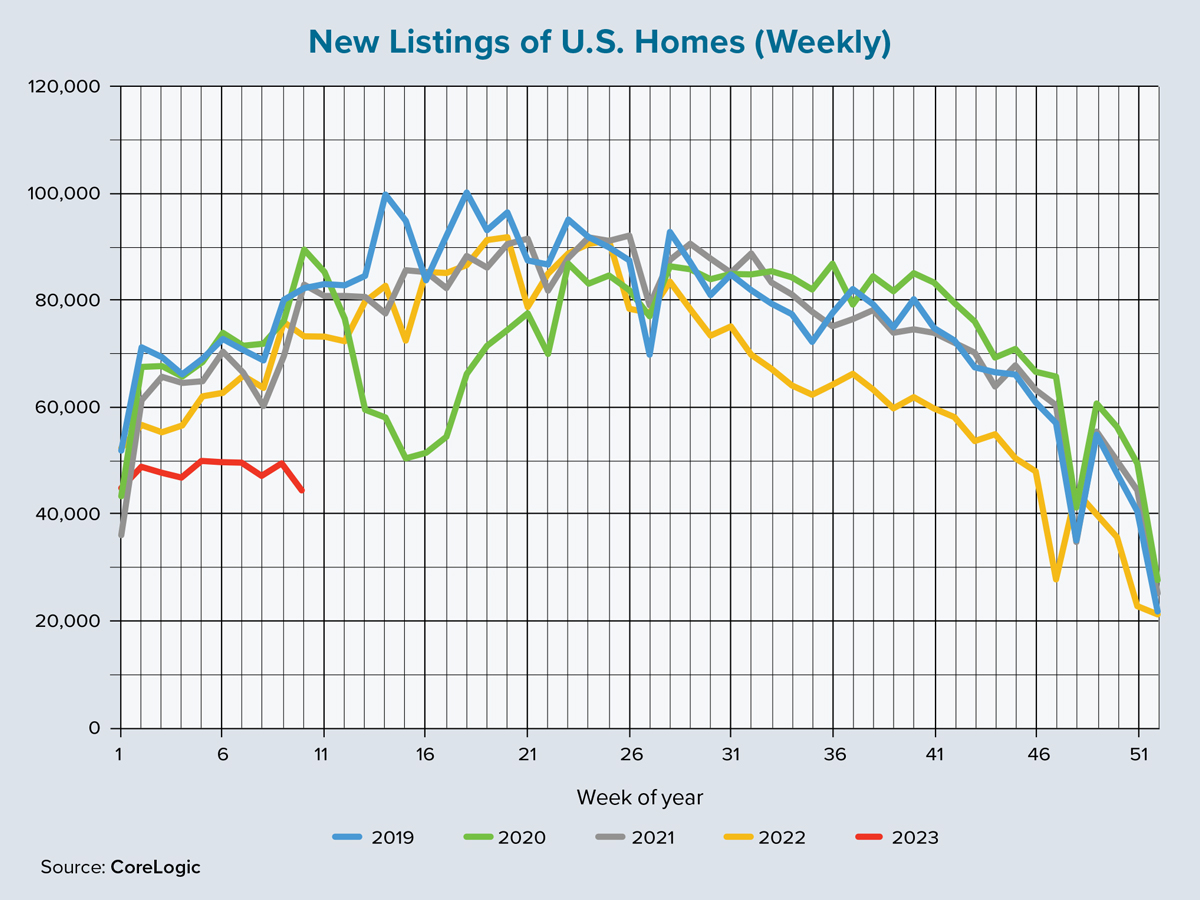In 2023, the spring homebuying season once again has its share of challenges. Two large ones in particular are weighing on the housing market’s outcome: mortgage interest rates and the inventory of homes for sale.
Mortgage rates have continued along their volatile path since the beginning of the year with instability in no small part now being driven by turmoil in the banking system. On the other hand, the availability of existing homes for sale continues to churn along at historically low levels and is also being impacted by mortgage rate gyrations more so than at any time in recent history.
The reason that the supply of existing homes for sale is heavily dependent on mortgage rates is because 95% of borrowers with outstanding mortgage debt have a rate below 5%, according to CoreLogic data. More than 80% have a rate below 4% while nearly half (42%) of existing mortgages are locked in at rates below 3%. Given that the current mortgage rates for the vast majority of potential home sellers are significantly higher than their locked-in rate, there is no incentive for them to sell their home and give up their super low rate.
The chart on this page illustrates the evidence of the impact of mortgage rates on for-sale inventory. When rates started creeping up in the summer of 2022, the level of new for-sale listings started to decline notably. In the first six months of last year, the number of new listings entering the market was only 3% below the levels seen during the same period in 2021, CoreLogic data shows.
But as mortgage rates surged in July 2022, the number of new listings began to trend 20% below 2021 levels and dropped by more than 30% by the end of the year. The early weeks of 2023 saw barely any improvements in new listings, which were about 20% below 2022 levels and more than 30% below pre-pandemic levels of 2019 and early 2020.
While the dearth of homes for sale has been the Achilles’ heel of the housing market, particularly for those regions that have had very little new construction activity, the silver lining for the remainder of this year — which already appears fraught with more volatility and uncertainty — is that low inventory will keep home price declines at bay. This is especially important when comparing the current banking crisis to the events that led up to the Great Recession and the home price collapse that followed.
A key difference in today’s housing market is that borrowers have locked in historically low-rate mortgages, most of which are 30-year fixed loans. Current borrowers have built up nearly four times as much home equity than in the pre-Great Recession days. Leading up to that downturn, some 24% of outstanding mortgages were adjustable-rate loans that borrowers could no longer afford following the rate reset, either due to loan characteristics or job loss. Today, however, less than 5% of outstanding mortgages have adjustable-rate features.
While the low supply of homes for sale may help the market at this point of the housing cycle — given an anticipated recession and the potential fallout from the banking crisis — it does not bode well for the market in the long term since it reduces affordability and market velocity. In addition, the availability of entry-level homes for first-time buyers will remain low as current owners hold on to their homes for longer. ●
Author
-

Selma Hepp is the chief economist for CoreLogic, the nation’s largest provider of advanced property and ownership information, analytics and data-enabled services. Hepp leads the economics team, which is responsible for analyzing, interpreting and forecasting trends in real estate, mortgage and insurance. Prior to joining CoreLogic, she was chief economist and vice president of business intelligence for Pacific Union International, later acquired by Compass. Visit CoreLogic at corelogic.com.




